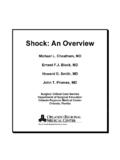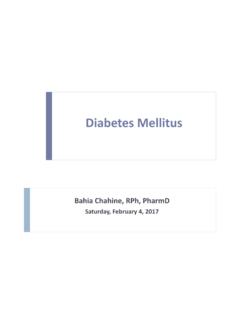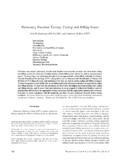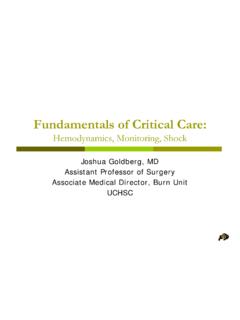Transcription of Patient Assessment: Venous History, Examination …
1 Patient assessment : Venous history , Examination and CEAP. The first consultation with the Patient is a time of evaluation. It is a time when we are evaluating the Patient and the Patient is evaluating us! If you are mindful of this fact it will influence the way you conduct yourself during the time spent with the Patient . During the consultation we need to satisfy a number of entities. These include: - The Patient Medico-legal fraternity Medicare Us So the consultation needs to be structured so that all the above requirements are met. To satisfy the Patient we must: - Address the patients concerns. We must convey our concerns regarding their condition. Convey an atmosphere of confidence, competence and thoroughness. The Patient is motivated to partake in discussion. To satisfy Medicare for a prolonged consultation we must: - Take a thorough detailed multi-system history .
2 Perform a methodical and thorough multi-system Examination . Perform or request appropriate investigations. Provide informative discussion and literature. All of which needs to be recorded and documented. The Venous history to be adequate entails asking about 120 questions which is time consuming and fatiguing and often resulting in indecisive answers from patients . These include questions from the following categories. 1. Presenting complaints and symptoms. 2. Aggravating and relieving factors. 3. Questions relating to onset of disease. 4. Pelvic congestion. 5. Past Venous history . 6. Past vein treatment history . 7. Past medical history . 8. Gynaecological and obstetric history . 9. Family history . 10. Psychological history . 11. Social history . 12. Medication list. 13. Allergies. 14. Other How does one ask and get answers to 120 questions and still be able to complete the consultation within the time frame?
3 It is suggested that you prepare a pre-printed Patient questionnaire that can be filled out by the Patient prior to the consultation. Sample questionnaires can be found in most Phlebology textbooks and can be customised to suit you. Making use of these can dramatically reduce the consultation time and yet is thorough and allows the practitioner to focus on the important points of interest. The phlebological consultation has its own agenda apart from satisfying the various parties described above. What we want to be able to do at the consultation is to: - 1. CEAP classify-therefore make a diagnosis. 2. Determine the Patient 's relative risk of thrombosis. 3. Formulate a management plan. 4. Be confident that there has been a meaningful discussion. When performing history and Examination you must always be thinking in the language of the Phlebologist.
4 That is the CEAP classification . This is the universal language of the Phlebologist that allows for UNIFORM. diagnosis and for meaningful COMMUNICATION internationally. history . With taking the Venous history one is seeking to determine and clarify the answers given in the questionnaire but also to then seek answers to questions of special interest. I tend to focus to clarify the following questions of special interest: - 1. What are the patients concerns- do they have symptoms? Or is their problem just cosmetic? These two patients have very different expectations. 2. Are there symptoms of Venous disease? Aching Heaviness Tiredness Throbbing Pain Burning Itching Cramping These symptoms are typically worse with prolonged sitting and standing and are worse towards the end of the day. The symptoms are usually relieved by walking or by elevating the legs or by wearing compression.
5 Other diagnosis should be considered if there is no typical association of the symptoms. 3. Is there a family history of Venous disease? One must inquire about blood relatives with known Venous disease. 4. Is there personal or family history of Thromboembolic disease? Specific questions need to be asked to jolt their memory Have they ever taken warfarin or required injections into the tummy? Have they ever had leg problems following plane travel? Past history of leg fractures? These may produce local distortion of Venous anatomy and also be sites of undetected DVT. Any leg problems with pregnancy? 5. Have they had past procedures to the veins? If so, then when and what was performed? Eg. High ligation and stripping, ambulatory phlebectomy, UGS, EVLT etc. 6. Were they satisfied with the past treatment?
6 If not why? Was it due to pain/or time involved/cost/poor results/perceived or real complications? Perhaps they have unrealistic expectations! 7. Future plans. Are they planning an overseas trip soon? If so will you be able to achieve the result in time? Are there risks with proceeding with treatment and pending plane travel? Are they planning a pregnancy soon? 8. What medications are being taken? HRT/OCP/NSAI/Iron/Vitamins/antibiotics-a re they contraindicated? This needs to be documented and having a Patient questionnaire with room for notes is very useful. Examination OF THE Patient . The aim of the Examination is to:- 1. Identify clearly the patients concerns. 2. Clarify the Venous anatomy. 3. Locate the proximal sites of reflux. 4. Determine the severity of reflux. Patient positioning for Examination is important and most Phlebologists use an elevated stand.
7 The design of the stand should be given consideration. At the very least the stand should have a supportive bar that the Patient can grip to allow for stability during Examination . We then INSPECT the Patient looking at: - 1. Abdomen for any distended veins, which suggests possible obstruction to IVC. 2. Look at the skin for malignant skin lesions. 3. Look at the groin and perineum to see if vulval veins are present suggestive of pelvic vein reflux. Always ask permission and explain what you are looking for! 4. Thighs 5. Legs 6. Non- Venous clues to Venous disease. Non Venous clues suggesting Venous disease. Foot posture are they flat footed-may increase risk of incompetent calf perforators. Asymmetrical swelling may be suggestive of previous undiagnosed DVT. Surgical scars may lead to abnormal Venous patterns.
8 Skin changes-general skin discoloration. -oedema (C3). -Early Venous eczema. (C4a). - Pigmentation. (C4a). -Atrophie blanche. (4b). -Lipodermatosclerosis. (C4b). -Ulceration-healed (C5) or active (C6). Venous Clues- Venous Examination I tend to categorize the veins into two groups and always try and related the location to the main system it relates to. 1. Large veins -Truncal- eg GSV/SSV. -Branch veins- eg ALVV/AMVV/PTVV. -Related to Incompetent perforators. 2. Small veins -Reticular veins -Telengiectasias Methodical Examination is required and I tend to focus on the commonest sites of reflux. 1. Sapheno-femoral junction and GSN. 2. Sapheno-popliteal junction and SSV. 3. Perforating veins 4. Superficial veins. CEAP classification C- Clinical Manifestations E-Etiologic Factors A-Anatomical Consideration P- pathophysiology The CEAP committee quickly established that to develop a UNIVERSAL.
9 classification system for CVD also required a consensus on the definitions of the words used in the classification . CVD including the full spectrum of morphological and functional abnormalities of the Venous system from telangiectasias to Venous ulcers. Telangiectasias a confluence of dilated intradermal venules of<1mm in diameter. Synonyms include spider veins, hyphen webs and thread veins. Reticular veins dilated bluish subdermal veins usually between 1mm - 3mm in diameter. Synonyms include blue veins, subdermal varices and venulectasias. Varicose veins subcutaneous dilated veins greater than or equal to 3mm in diameter as measured in the upright position. Synonyms include varix, varices and varicosities. Corona Phlebectatica a fan shaped pattern of numerous intradermal veins on the medial or lateral aspects of the ankle and foot.
10 Synonyms include malleolar flare and ankle flare. Oedema a perceptible increase in volume of fluid in the skin and subcutaneous tissue characteristically indenting with pressure. Usually located in the ankle but also can extend to the leg and foot. Pigmentation a brownish darkening of the skin resulting from extravasated blood, which usually occurs in the ankle region but may extend to the leg and foot. A sign of increasing Venous pressure due to CVD. Eczema an erythematous dermatitis which may progress to blistering, weeping, or scaly eruption of the skin of the leg. Commonly located near varicose veins but can be localised anywhere on the leg and reflects uncontrolled CVD. Lipodermatosclerosis localised chronic inflammation and fibrosis of the skin and subcutaneous tissue of the lower leg and suggests severe CVD.
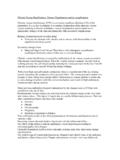
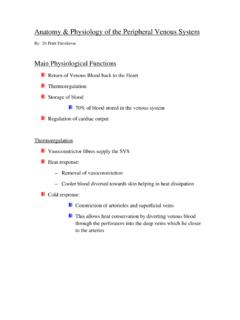
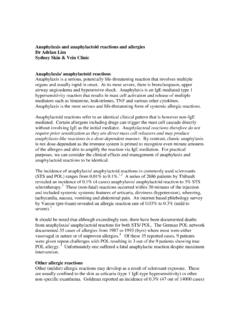

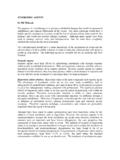
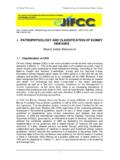
![Heart Failure Pathophysiology.ppt [Read-Only]](/cache/preview/5/6/a/8/a/5/4/1/thumb-56a8a5411198557184679ccfbe445eec.jpg)

